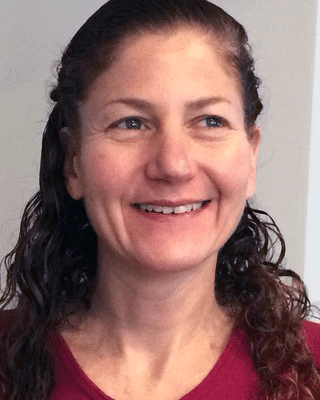

This is not a break. It's a breakthrough.
We are not an all-inclusive resort. We don't offer massage or room service. There is no pool to relax by. What we offer is the opportunity to leave behind your grief, fear, and trauma once and for all and find the freedom you are desperately seeking. This is not superficial or temporary work. This is the solution you have been searching for.

Fast Results
Heal from trauma and achieve the freedom you have been seeking in days, not months or years.

Proven Methods
Scientifically proven therapies to process your trauma and leave it behind for good.

Ongoing Progress
Studies show that your personal growth continues even after you have returned home.
Leave behind your burdens once and for all.
An intensive therapy retreat is a unique and transformative experience that offers a concentrated and immersive approach to addressing emotional and psychological challenges, helping you achieve significant results in days, not years. During an intensive therapy retreat, you can expect to work closely with your trained therapist to identify and address your biggest issues to achieve lasting change in your life.
Your retreat begins with a personal consultation with your therapist to determine if an intensive therapy retreat is an appropriate fit for your needs. A personalized plan is developed, including the recommended length of the retreat. Your therapist will meet with you for several hours per day, supporting you to work through your struggles and achieve the emotional freedom you are longing for.
Throughout the retreat, you can expect to engage in various therapeutic techniques, such as EMDR, IFS, and ART, which are designed to help you process and release negative emotions and limiting self-beliefs associated with trauma. Your therapist may also suggest activities for you to do on your own, such as journaling, meditation, or yoga, to support your healing process.
One of the key benefits of an intensive therapy retreat is the opportunity to work intensively with a trained therapist in a supportive and non-judgmental environment. This allows for a deeper level of exploration and healing, which can lead to significant and lasting changes in your life.
How We Help
Our retreats can address a wide variety of issues, providing significant relief in days, not weeks or years. By utilizing the intensive therapy model, we offer a specialized approach that provides concentrated support during your trauma recovery. This allows you to focus deeply on your healing in an immersive environment, fostering rapid personal growth and insight.
Trauma
We utilize scientifically proven methods to help you process and release the negative emotions and limiting self-beliefs associated with trauma so that you can move forward in your life.
PTSD
Survivors of crime, abuse, war, accidents, and natural disasters, can experience PTSD. Processing trauma provides the freedom to live your life while leaving symptoms behind.
Child Abuse
Child abuse creates lasting issues that persist long into adulthood. Our trauma modalities are designed to address the core issues related to child abuse so that you can leave the past behind.
Sexual Abuse
Sexual abuse is an intense violation of our safety and autonomy. We have decades of experience using proven techniques to free you from the lingering symptoms of sexual abuse.
Our Proven Therapies
We only use therapies that are proven to be safe, effective, and backed by decades of research and client experiences.
EMDR
EMDR works exceedingly well to resolve unprocessed traumatic events and offers lasting results in fewer sessions than other psychotherapy treatments.
IFS
Internal Family Systems (IFS) is a remarkable form of behavioral therapy that identifies and addresses the various sub-personalities, or “parts” within us.
ART
Research has demonstrated that ART therapy achieves rapid results and that the gains made by clients are maintained for at least 4 months after its conclusion.
Private Intensive Therapy Retreats
Private intensive therapy retreats offer a unique and personalized approach to addressing emotional and psychological challenges. These retreats are designed for individuals who prefer a one-on-one setting and are looking for a more intensive and immersive experience.
During a private intensive therapy retreat, you will work closely with a trained therapist to identify and address underlying issues, develop coping strategies, and achieve lasting changes in your life. The retreat is tailored to your specific needs and goals, and the therapist will work with you to develop a personalized plan that addresses your unique challenges and concerns.
Private intensive therapy retreats are ideal for individuals who have experienced trauma, emotional abuse, or sexual abuse, and are looking for a safe and supportive environment to process and heal. These retreats are also beneficial for individuals who are struggling with mental health issues, such as depression, anxiety, or low self-esteem, and are looking for a more intensive and immersive approach to therapy.
Preparing for an Intensive Retreat
Preparing for an intensive therapy retreat requires some planning and preparation. Here are some tips to help you prepare for your retreat:
- Be clear about your goals and what you hope to achieve during the retreat.
- Be prepared to work intensively with a trained therapist and to engage in various therapeutic techniques.
- Be open and honest about your struggles and challenges, and be willing to confront and work through difficult emotions.
- Be prepared to take care of yourself during the retreat, including getting enough rest, eating healthy foods, and engaging in self-care activities.
- Be prepared to follow up with your therapist after the retreat to continue working on your goals and to maintain the progress you made during the retreat.
What to Bring and Expect
Here are some things to bring and expect during an intensive therapy retreat:
- A journal or notebook to record your thoughts and feelings during the retreat.
- Comfortable clothing and shoes, as you will be engaging in various activities during the retreat.
- Any medications or supplements that you are currently taking.
- A list of questions or concerns that you want to address during the retreat.
- An open and honest attitude, and a willingness to work through difficult emotions and challenges.
- A commitment to follow up with your therapist after the retreat to continue working on your goals and to maintain the progress you made during the retreat.
During the retreat, you can expect to engage in various therapeutic techniques, such as EMDR, IFS, and ART, which are designed to help you process and release negative emotions and limiting self-beliefs associated with trauma. You can also expect to work closely with a trained therapist who will provide a safe and supportive environment for you to explore and heal.
About Dr. Bambi Rattner, Psy.D.
Bambi received her master’s degree in 1987 and has been in practice ever since. She received her doctorate in psychology in 1997 and has worked in pretty much every setting, with every age, and every population. She started in residential, inpatient psychiatric units, and sheltered workshops. She has worked in the schools and in nursing homes, seen clients outpatient and in-home. Her clients have ranged in age from 3–103.
Bambi trained in Eye Movement Desensitization and Reprocessing (EMDR) and received her certification in 2016. She feels that clients are experts in themselves, and with EMDR, she can effectively tap into their innate drives not only to survive, but to flourish. She is now certified in EMDR and became an EMDRIA (EMDR International Association) Approved Consultant in 2020. She regularly utilizes Internal Family Systems (IFS) during sessions to facilitate emotional processing.

"I have always felt that clients are experts in themselves, and with EMDR I could effectively tap into their innate drives not only to survive, but to flourish." – Dr. Bambi Rattner
Our Locations
We have several retreat locations across the East and West coasts of the US and Canada.
Schedule a Call
What Else Can Be Addressed in a Retreat?
Every person is unique in how they cope with negative life experiences and the symptoms with which they struggle. We have worked with people facing all sorts of problems and found that all can be substantially healed, no matter how drastic, provided they are willing and motivated to do the work. Below are some problems that can be addressed during our top mental health retreats using a combination of EMDR and Internal Family Systems Therapy much more quickly and effectively than in weekly trauma therapy or mental health counseling services:
•Depression: One of the most common symptoms of past trauma, depression can manifest as a general lack of motivation or interest in things that were once considered enjoyable or in severe cases as suicidal tendencies. Depression can change over time, often affected by seasonal changes and the amount of social contact. We have a tendency to downplay our depression if it is not overt, but coming to a retreat and working with a professional who is trained in the ways that trauma can manifest itself provides the opportunity to confront our depression for what it is; a coping mechanism for the unhealed wounds of our worst past experiences. Processing those memories using therapy for trauma can sometimes completely resolve depression in only a few days, freeing you from the painful emotions of your past.
• Anxiety: Anxiety can present itself in countless ways, affecting everything from our ability to meet new people to the ease with which we drift off to sleep. We may feel tremendous work-related anxiety as deadlines approach. At the extreme end, panic disorders can cause severe anxiety that often seems to emerge from nothing, gripping our body with intense feelings of terror and a sense that the end is near. Confronting anxiety during the retreat and processing the emotions behind it can yield seemingly miraculous results, offering you the freedom to finally breathe again and recognize that today you are safe and what you are afraid of is no longer a threat.
• Low Self-Esteem: Often our negative life experiences can trigger deep feelings of guilt and shame, either related to the event itself or our ability to cope with it. Low self-esteem keeps us from expressing ourselves easily and authentically, debilitates our willingness to reach for new achievements and limits our belief that we deserve healthy boundaries and relationships. Low self-esteem is often a side effect of past trauma, even pre-verbal trauma that occurred before we were old enough to understand words and language. We may have picked up the limiting beliefs that we are not worthy of love or care, or that we are destined to fail. All of these negative ideas can be addressed when we look at the core trauma that is connected to them. A retreat gives you ample time to unpack all of these issues in detail, allowing you to process the underlying emotions and finally put them to rest.
• Chronic Stress: Stress is a necessary and unavoidable part of life, but the way we deal with stress has a lot to do with the intensity of our negative experiences and how we have coped with them in the past. Stress can promote healthy growth, as in the case of a fitness routine, but too much stress can cause overwhelm and breakdown. The same is the case for emotional and psychological stress. The things that hurt us, if they are chronic or too severe and we lack the necessary support, can be debilitating. But broken into smaller pieces, those same issues can provide us with an opportunity for growth. Letting go of past trauma can result in a significant reduction in the unhealthy stress you experience towards your life and responsibilities, allowing you to approach new challenges with courage and resilience.
What Problems Cannot Be Solved?
There are certain active conditions that limit our ability to do meaningful trauma work with somebody. If a person is currently in a very fragile mental state or compromised by drugs or alcohol, deep trauma processing can be counterproductive and potentially dangerous. Please note that these limitations are not permanent, and when the situation calms enough that it becomes more stable, a trauma therapy-based retreat is the best way to address the root cause of these emotional and behavioral problems. We always recommend that somebody have an ongoing therapist for mental health counseling services before and after a retreat.
• Active Addiction: We request that retreat participants abstain from substance usage 2 days prior to and throughout the course of the retreat. People who are suffering from active addiction should seek the support of a detox center or substance abuse counselor before attending a retreat.
• Actively Considering Suicide: A big part of our work is moving through emotions related to past trauma, which can trigger intense but momentary emotional discomfort, which would be unsafe for somebody who is actively considering suicide. People who have experienced suicidal ideology in the past can absolutely benefit from a retreat, but it is requested that they be in the care of a therapist before attendance.
Seeking an Intensive Retreat with Your Partner?
Head to An Affair Of The Heart to learn about the top mental health retreats to rapidly transform your relationship.
Have Questions? We're Here For You.
Fill out the form below and we’ll respond as soon as possible. Please do not submit any confidential information.













